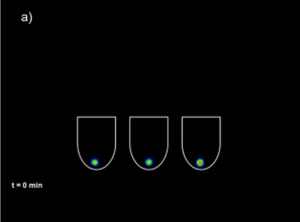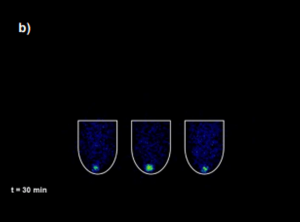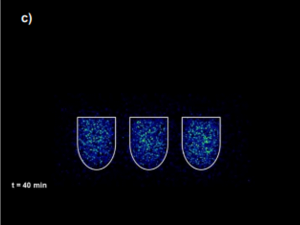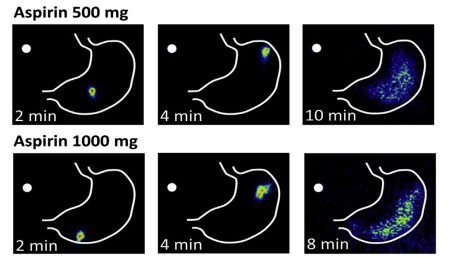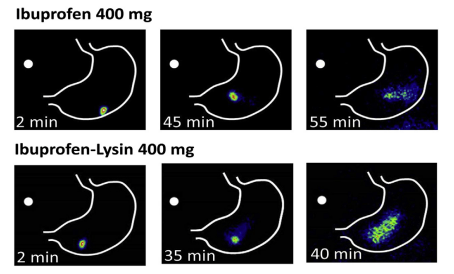References
[1] S. Derry, R.A. Moore
Single dose oral aspirin for acute postoperative pain in adults
Cochrane Database Syst. Rev. (4) (2012), 10.1002/14651858.CD002067.pub2
Art. No.: CD002067 Google Scholar
[2] D.M. McCarthy
Efficacy and gastrointestinal risk of aspirin used for the treatment of pain and cold
Best Pract. Res. Clin. Gastroenterol., 26 (2012), pp. 101-112 Google Scholar
[3] R. Eccles, I. Loose, M. Jawad, L. Nyman
Effects of Acetylsalicylic Acid on Sore Throat Pain and Other Pain Symptoms Associated with Upper Repiratory Tract Infection Pain Medicine, vol. 4 (2003), pp. 118-124 View Record in Scopus
[4] C. Bachert, A.G. Chuchalin, R. Eisebitt, V.Z. Netayzhenko, M. Voelker
Aspirin compared with acetaminophen in the treatment of fever and other symptoms of upper respiratory tract infection in adults: a multicenter, randomized, double-blind, double-dummy, placebo-controlled, parallel-group, single-dose, 6-hour dose-ranging study
Clin. Ther., 27 (2005), pp. 903-1003 Google Scholar
[5] K. Kanani, S.C. Gatoulis, M. Voelker
Influence of differing analgesic formulations of aspirin on pharmacokinetic parameters
Pharmaceutics, 7 (2015), pp. 188-198 Google Scholar
[6] M. Voelker, M. Hammer
Dissolution and pharmacokinetics of a novel micronized aspirin formulation
Inflammopharmacology, 20 (2012), pp. 225-231 Google Scholar
[7] M. Alemanni, S.C. Gatoulis, M. Voelker
Dissolution rates of over-the-counter painkillers: a comparison among formulations
Minerva Med., 107 (2016), pp. 125-130 Google Scholar
[8] S.A. Cooper, M. Voelker
Evaluation of onset of pain relief from micronized aspirin in a dental pain model
Inflammopharmacology, 20 (2012), pp. 233-242 Google Scholar
[9] M. Voelker, B.P. Schachtel, S.A. Cooper, S.C. Gatoulis
Efficacy of disintegrating aspirin in two different models for acute mild-to-moderate pain: sore throat pain and dental pain
Inflammopharmacology, 24 (2016), pp. 43-51 Google Scholar
[10] K. Schroer
Acetylsalicylic Acid
(second ed.), Wiley-VCH, Weinheim, Germany (2016) Google Scholar
[11] K. Kelly, B. O`Mahony, B. Lindsay, T. Jones, T.J. Grattan, A. Rostami-Hodjegan, H.N.E. Stevens, C.G. Wilson
Comparison of the rates of disintegration, gastric emptying, and drug absorption following administration of a new and a conventional paracetamol formulation, using γ-scintigraphy
Pharmaceut. Res., 20 (2003), pp. 1668-1673 Google Scholar
[12] W. Weitschies, C.G. Wilson
In vivo imaging of drug delivery systems in the gastrointestinal tract
Int. J. Pharm., 417 (2011), pp. 216-226 Google Scholar
[13] C.G. Wilson, C.P. Clarke, S.L. Yan Yan, G.D. Clarke
Comparison of a novel fast-dissolving acetaminophen tablet formulation (FD-APAP) and standard acetaminophen tablets using gamma scintigraphy and pharmacokinetic studies
Drug Dev. Ind. Pharm., 37 (2011), pp. 747-753 Google Scholar
[14] R.A. Moore, P.J. Wiffen, S. Derry, T. Maguire, Y.M. Roy, L. Tyrrell
Non-prescription (OTC) oral analgesics for acute pain – an overview of Cochrane reviews
Cochrane Database Syst. Rev. (11) (2015), 10.1002/14651858.CD010794.pub2
Art. No.: CD010794 Google Scholar
[15] M. Klueglich, A. Ring, S. Scheurer, D. Trommeshauser, C. Schuijt, B. Liepold
Ibuprofen extrudate, a novel rapidly dissolving ibuporfen formulation: relative bioavailability compared to ibuprofen lysinate and regular ibuprofen, and food effect on all formulations
J. Clin. Pharmacol., 45 (2005), pp. 1055-1061 Google Scholar
[16] D.Y. Graham, J.L. Smith
Aspirin and the stomach
Ann. Intern. Med., 104 (1986), pp. 390-398 Google Scholar
[17] L.M. Lichtenberger
Where is the evidence that cyclooxygenase inhibition is the primary cause of nonsteroidal anti-inflammatory drug (NSAID)-induced gastrointestinal injury? Topical injury revisited
Biochem. Pharmacol., 61 (2001), pp. 631-637 Google Scholar
Citations
Application of the GastroDuo to study the interplay of drug release and gastric emptying in case of immediate release Aspirin formulations
2020, European Journal of Pharmaceutics and Biopharmaceutics
Development of ibuprofen dry suspensions by hot melt extrusion: Characterization, physical stability and pharmacokinetic studies
2019, Journal of Drug Delivery Science and Technology
Improved dissolution of ibuprofen after crystallization from polymeric solution: Correlation with crystal parameter
2021, Journal of the Serbian Chemical Society
A novel cyanoacrylate-based matrix excipient in HPMCP capsules forms a sustained intestinal delivery system for orally administered drugs with enhanced absorption efficiency
2021, Journal of Materials Chemistry B
Nanoparticle-mediated dual targeting: An approach for enhanced baicalin delivery to the liver
2020, Pharmaceutics

